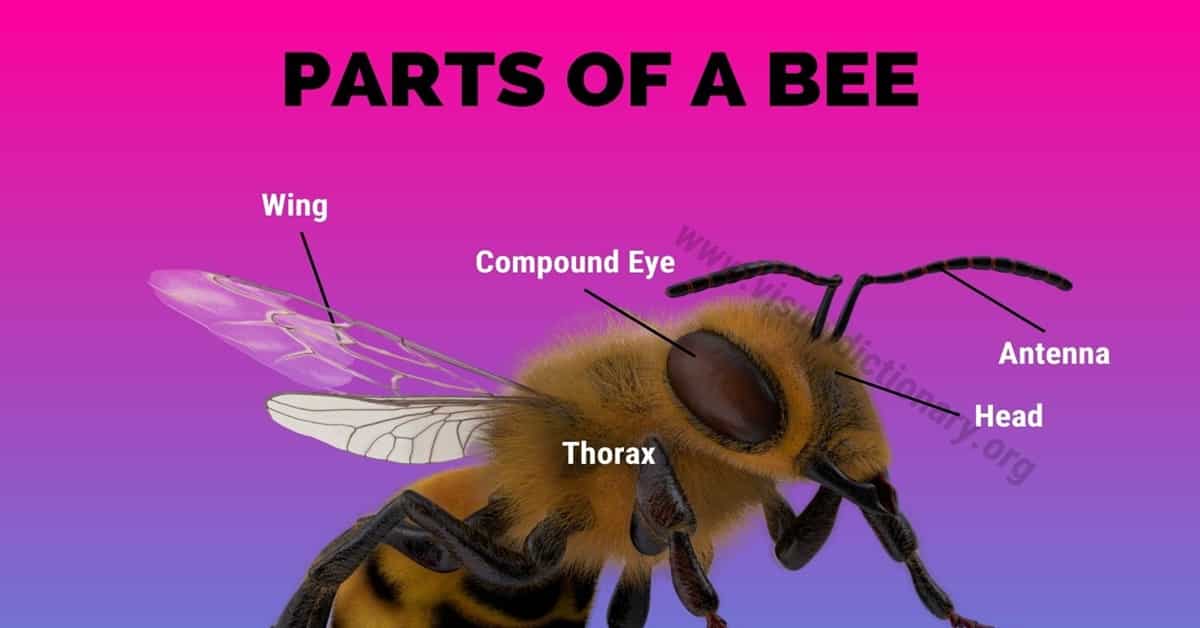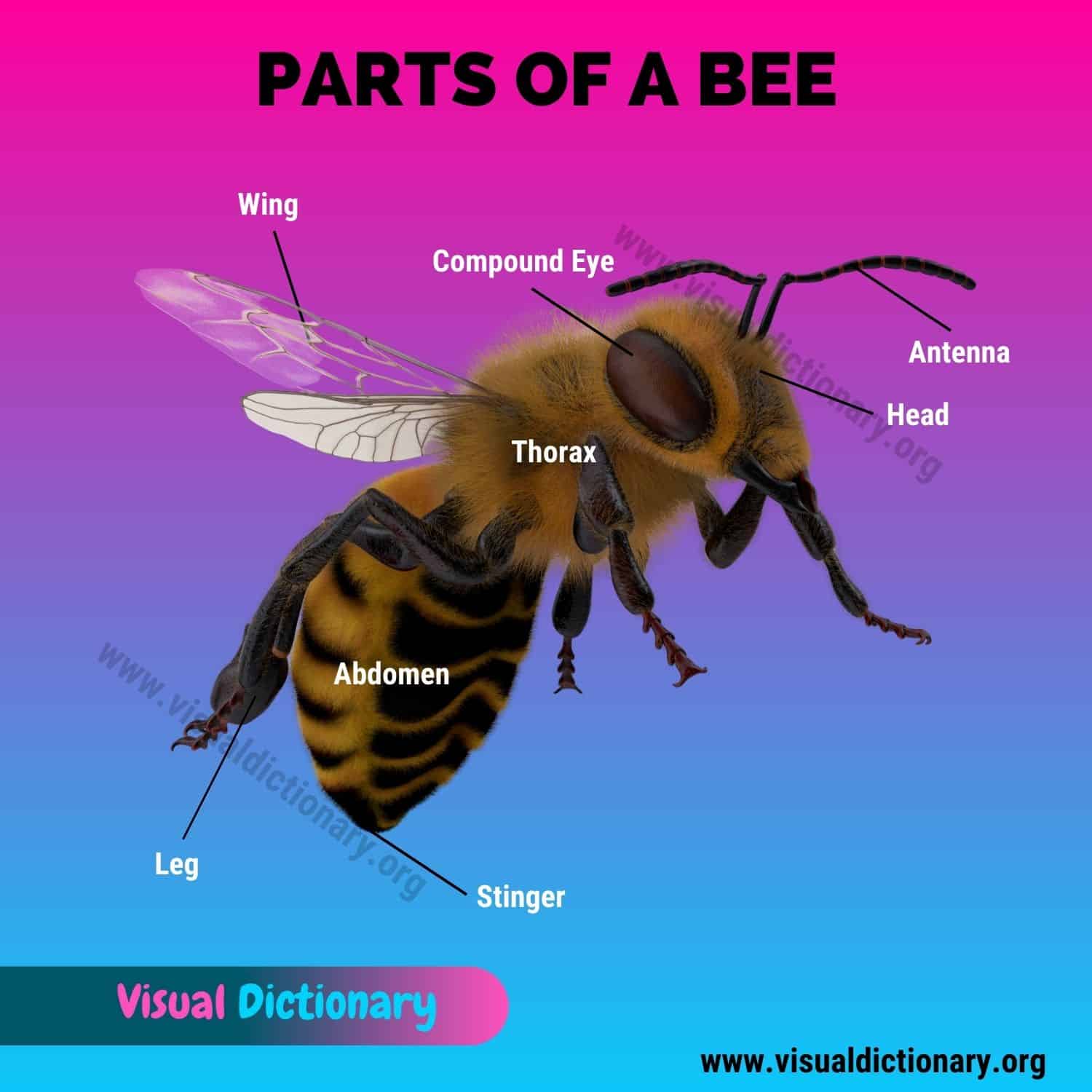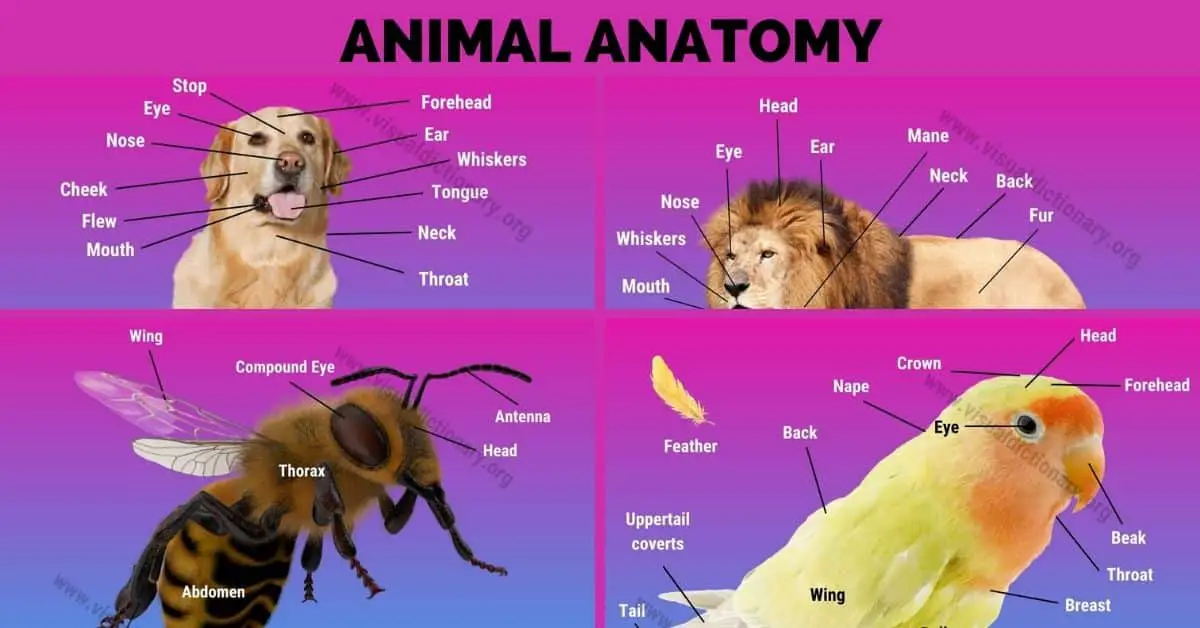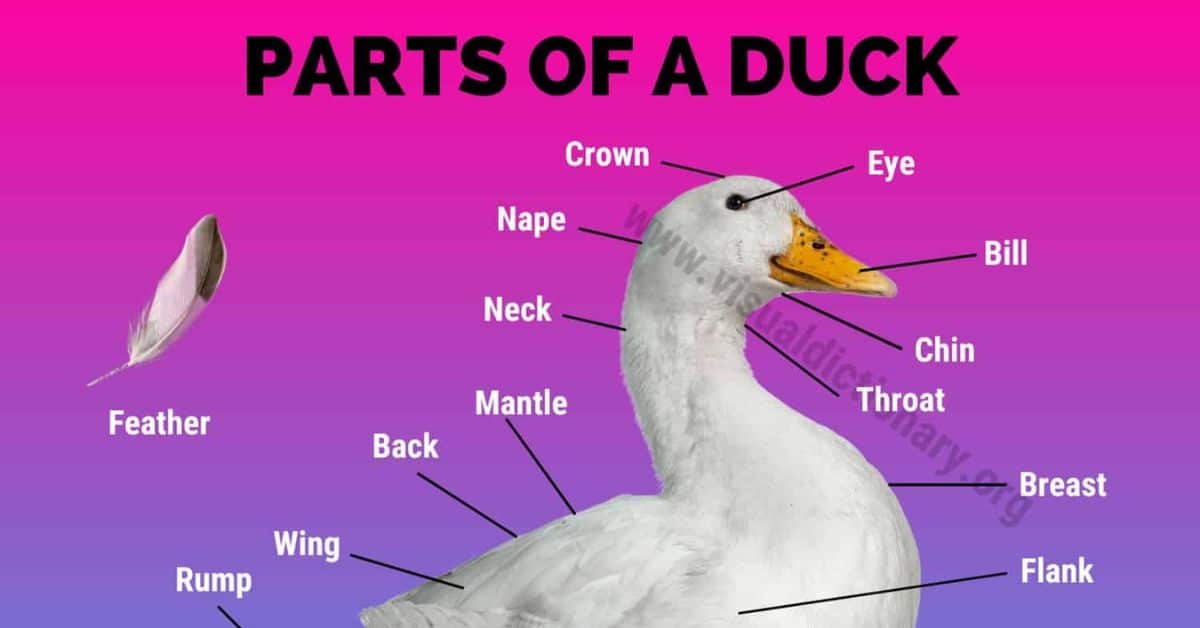Have you ever wondered about the intricate anatomy of a bee? Bees are fascinating creatures that play a vital role in our ecosystem. They are responsible for pollinating crops and producing honey, among other things. In this article, we will explore the different parts of a bee and their functions.
Table of Contents
Bees
Bees are insects and belong to the order Hymenoptera. They are known for their role in pollination and for producing honey and beeswax. Bees have three main body parts: the head, thorax, and abdomen. They also have two pairs of wings and six legs.
The head of a bee contains several important parts, including the eyes, antennae, and mouthparts. Bees have two compound eyes, which are made up of thousands of tiny lenses. They also have three simple eyes, which detect light and dark. The antennae are sensory organs that detect multiple things for the bee, including touch, taste, and smell.
The thorax of a bee is where the wings and legs are attached. Bees have two pairs of wings, which are used for flight and temperature regulation. The legs have specialized structures for collecting pollen and propelling the bee in flight.
The abdomen of a bee contains the digestive, reproductive, and respiratory systems. It also houses the stinger, which is used for defense. The stinger is only present in female bees and is used to inject venom into an attacker.
Bee Anatomy
Head
The head of a bee is responsible for sensory functions, including sight, smell, and taste. The head is also where the bee’s mouthparts are located, which are used for feeding and communication.
Antennae
The antennae of a bee are located on each side of the upper portion of the head. They are made up of a number of segments and are used as mechanoreceptors and odor receptors. Bees use their antennae to locate food sources, communicate with other bees, and navigate their way back to the hive. The antennae are also important for detecting changes in temperature and humidity.
Compound Eyes
The compound eyes of a bee are located on the sides of the head. They are made up of many tiny lenses called ommatidia, which allow the bee to see in multiple directions at once. Bees have excellent vision and can see ultraviolet light, which is important for finding nectar and pollen in flowers.
Mouthparts
The mouthparts of a bee are located on the front of the head. They consist of several parts, including the mandibles, maxillae, and labium. The mandibles are used for biting and cutting, while the maxillae and labium are used for lapping up nectar and water. Bees also have a long, tube-like proboscis that they can extend to reach deep into flowers to extract nectar.
Thorax
In the middle section of the honey bee’s body, we find the thorax. This is the center for locomotion and is made up of three segments, each with a pair of spiracles for letting in air. The thorax is where we find the bee’s wings and legs.
Wings
Bees have two pairs of wings that are attached to the thorax. These wings are thin and transparent, with a network of veins that provide strength and support. When bees fly, they move their wings in a figure-eight pattern that allows them to hover in place, fly forwards, backwards, or sideways, and even hover in place.
Legs
The thorax is also where we find the bee’s legs. Bees have three pairs of legs that are used for walking, gripping surfaces, and collecting pollen. Each leg is made up of several segments and is covered in tiny hairs that help the bee grip onto surfaces. The bee’s hind legs are specially adapted for collecting pollen. They have a flat area called the pollen basket, which is surrounded by hairs that help pack the pollen into place.
Abdomen
The abdomen of a bee is the third and final body segment. It is the largest part of the bee’s body and contains many important structures.
Stinger
The stinger is a modified ovipositor, which is an egg-laying structure. Only female bees have stingers, and they use them as a defense mechanism. When a bee stings, it injects venom into the victim’s skin, causing pain, swelling, and sometimes an allergic reaction. The stinger is barbed, which means that it gets stuck in the victim’s skin and is ripped out of the bee’s body when she tries to fly away. This causes the bee to die shortly after stinging.
Honey Stomach
The honey stomach is a sac-like structure in the bee’s abdomen that is used to store nectar. When a bee collects nectar from flowers, she stores it in her honey stomach. The nectar mixes with enzymes in the honey stomach, which breaks down the complex sugars in the nectar into simpler sugars. When the bee returns to the hive, she regurgitates the nectar into a cell in the honeycomb. Worker bees then fan their wings over the nectar to evaporate the water, which turns the nectar into honey.
Wax Glands
The wax glands are located on the underside of the bee’s abdomen. These glands produce wax, which the bees use to build the honeycomb. Worker bees between the ages of 12 and 17 days are responsible for producing wax. The wax is secreted as small flakes, which the bees chew and mold into the hexagonal shape of the honeycomb cells. The wax is also used to cap the cells once they are filled with honey or pollen.
Parts of A Bee | List
- Forewing
- Hindwing
- Antenna
- Compound Eye
- Mandibles
- Head
- Tongue
- Thorax
- Abdomen
- Spiracle
- Hind Leg
- Middle Leg
- Foreleg
- Stinger
Frequently Asked Questions
What are the different body parts of a honey bee?
As we mentioned earlier, honey bees have three main body parts: head, thorax, and abdomen. The head contains the bee’s sensory organs such as the eyes, antennae, and mouthparts. The thorax is where the wings and legs are attached to the body. The abdomen is the largest part of the bee’s body, consisting of 11 segments.
What are the functions of the honey bee’s body parts?
Each body part of the honey bee has a specific function that contributes to its survival. The head contains the bee’s sensory organs, which help it navigate and communicate with other bees. The thorax is responsible for the bee’s locomotion, allowing it to fly and walk. The abdomen contains the bee’s digestive system, reproductive organs, and venom glands.
How many body parts do honey bees have?
Honey bees have five characteristics that are common to most insects. They have a hard outer shell called an exoskeleton. They have three main body parts: head, thorax, abdomen. They have a pair of antennae that are attached to their head. They have six legs and two pairs of wings.
What are the characteristics of a honey bee’s legs?
Honey bee legs are specialized for different tasks. The front legs are used for cleaning and grooming, while the middle legs are used for walking and carrying pollen. The hind legs are used for collecting and transporting pollen and nectar. Honey bee legs also have spurs that help them cling to surfaces, and they have a special joint that allows them to fold their legs against their body during flight.
What is the morphology of a honey bee?
The morphology of a honey bee refers to the study of its physical structure and form. Honey bees have a complex arrangement of specialized structures, including their exoskeleton, wings, legs, and antennae. Their morphology is adapted to their unique lifestyle, allowing them to collect nectar and pollen, communicate with other bees, and defend themselves against predators.
Related:







